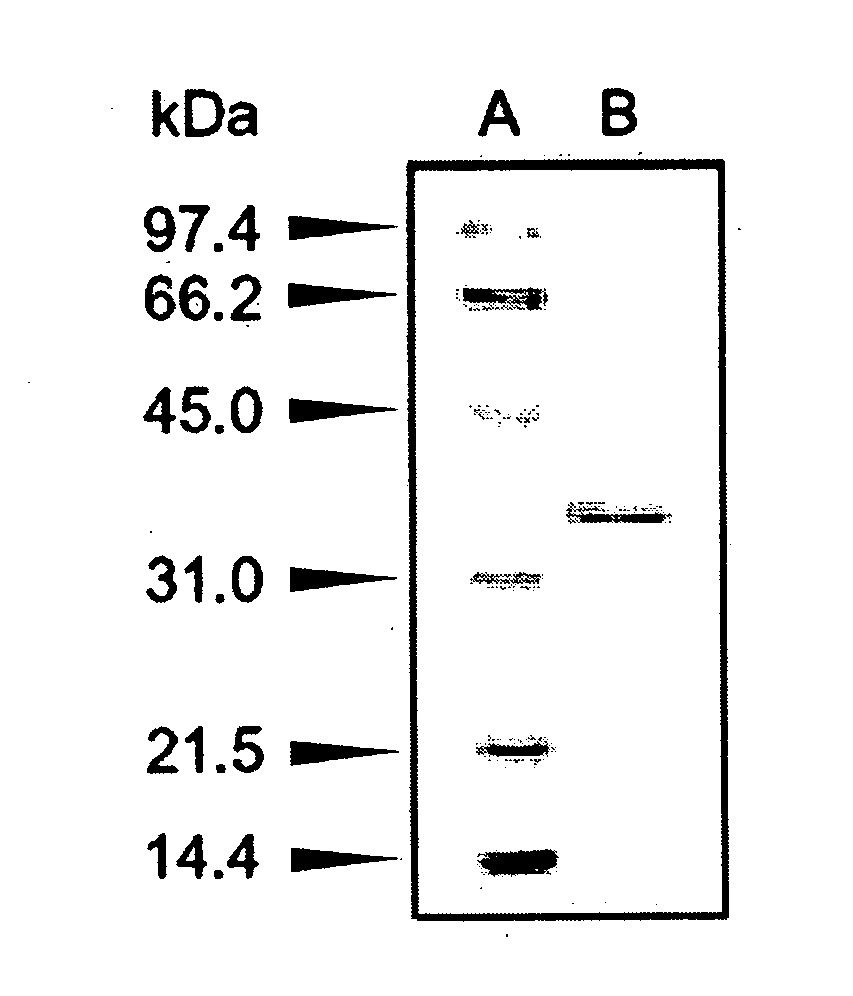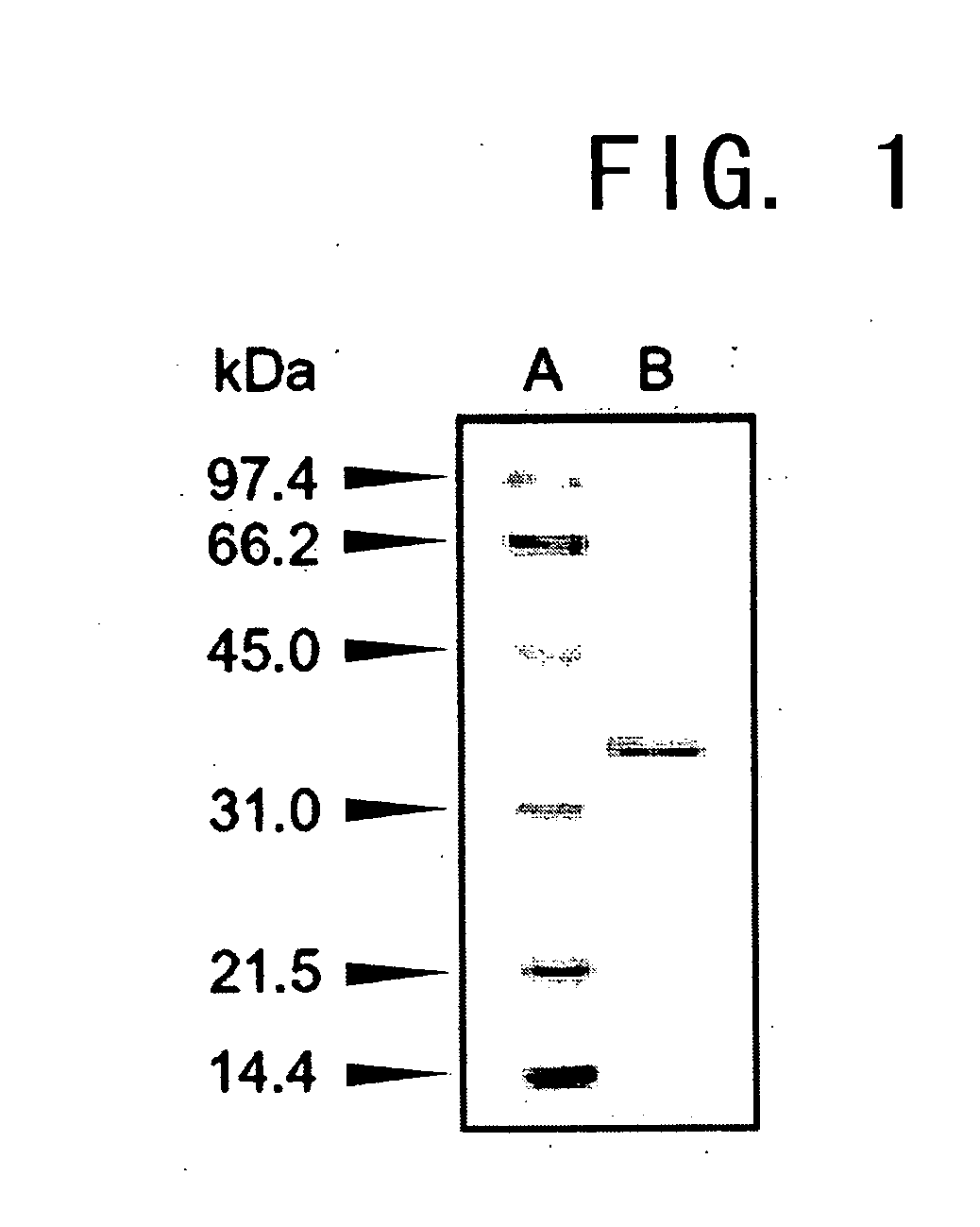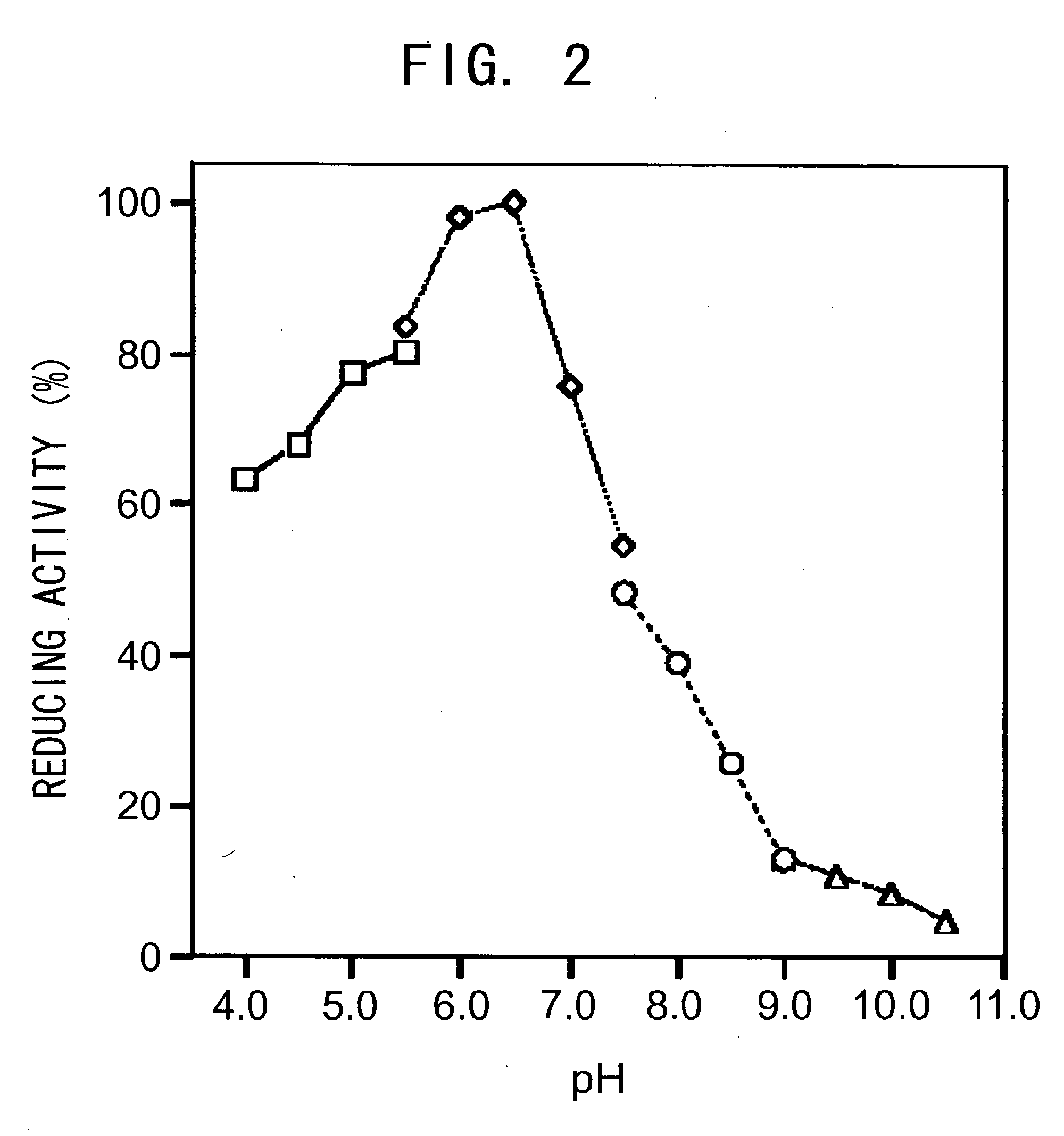Methods for producing optically active alpha-hydroxy amides
a technology of alpha-hydroxy amide and optical purity, applied in the direction of oxidoreductases, biochemistry apparatus and processes, enzymes, etc., can solve the problems of no more than 50% yield, no suitable industrial production, and potential for reducing optical purity, and achieve high optical purity
- Summary
- Abstract
- Description
- Claims
- Application Information
AI Technical Summary
Benefits of technology
Problems solved by technology
Method used
Image
Examples
example 1
[0132]Purification of α-ketoamide Reductase
[0133]500 g of live baker's yeast was purchased from Oriental yeast and the fungal cells were used to purify the enzyme. 500 g of live baker's yeast was suspended in 500 mL of a fungal cell lysis buffer (10 mM potassium phosphate buffer (pH 8.0), 0.02% 2-mercaptoethanol, 1 μM pepstatin A, 1 μM leupeptin, and 1 mM phenylmethanesulfonyl fluoride), and then crushed in a Mini-Lab (Raney). Fungal cell debris was removed by centrifugation to obtain a cell-free extract. Protamine sulfate was added to the cell-free extract, and nucleic acids were removed by centrifugation. Ammonium sulfate was added to the resulting supernatant to obtain 70% saturation. The enzyme was obtained from the resulting precipitated fraction, which was collected by centrifugation.
[0134]The resulting precipitate was dissolved in 150 mL of 100 mM potassium phosphate buffer (pH 7.0), and dialyzed against buffer A (10 mM potassium phosphate buffer (pH 7.0), 1 mM ethylenediamin...
example 2
[0140]Determination of the Molecular Weight of α-ketoamide Reductase
[0141]The molecular weight of a subunit of the enzyme prepared in Example 1 was determined to be approximately 36,000 by SDS-PAGE, and approximately 33,000 using a gel filtration column of HiLoad 16 / 60 Superdex 200. Thus, the enzyme was deduced to be monomeric.
example 3
[0142]Optimal pH for α-ketoamide Reductase
[0143]The pH of the reaction solution was altered using 0.1 M sodium acetate buffer (pH 4.0-5.5), potassiumphosphate buffer (pH 5.5-7.5), Tris-hydrochloride buffer (pH 7.5-9.0), and glycine-potassium hydroxide buffer (pH 9.0-10.5) to assess the pH dependency of the 2-chlorobenzoyl formamide-reducing activity of the enzyme obtained in Example 1. The activity at each pH was determined as a relative activity when the maximal activity was taken as 100. The result is shown in FIG. 2. The optimal pH (pH range in which the relative activity is 80% or higher) was 5.5-6.5.
PUM
| Property | Measurement | Unit |
|---|---|---|
| optical purity | aaaaa | aaaaa |
| optical purity | aaaaa | aaaaa |
| temperature | aaaaa | aaaaa |
Abstract
Description
Claims
Application Information
 Login to View More
Login to View More - R&D
- Intellectual Property
- Life Sciences
- Materials
- Tech Scout
- Unparalleled Data Quality
- Higher Quality Content
- 60% Fewer Hallucinations
Browse by: Latest US Patents, China's latest patents, Technical Efficacy Thesaurus, Application Domain, Technology Topic, Popular Technical Reports.
© 2025 PatSnap. All rights reserved.Legal|Privacy policy|Modern Slavery Act Transparency Statement|Sitemap|About US| Contact US: help@patsnap.com



